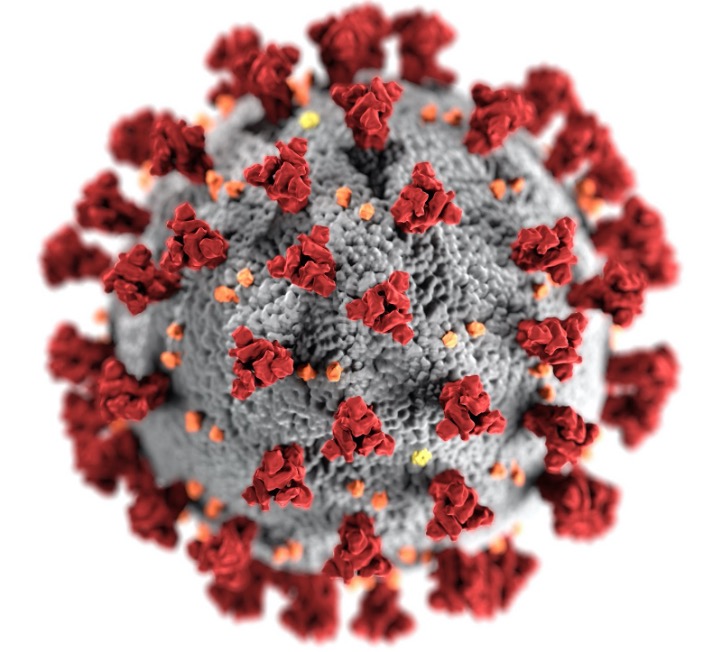By Nicole Gadda

SARS-CoV-2, the virus responsible for the coronavirus pandemic. Photo by CDC from Pexels.
Have you ever wondered why antibiotics treat strep throat, but not a bad case of the flu? At first glance, bacteria and viruses certainly seem very similar. After all, they’re both pathogens, which means they both can cause disease. So, how can doctors tell if your sore throat is due to a common cold (virus) or strep throat (bacteria)? How do scientists know which is which when they work with bacteria and viruses in their research labs? Here are 5 major differences:
1.Bacteria are alive, viruses are not. Bacteria are single-celled organisms that can make their own energy, grow, and reproduce — all things characteristic of life. In contrast, viruses cannot do any of these activities without a host cell. Host cells are cells of plants and animals that viruses must invade in order to grow and replicate using the host’s resources and machinery. Without a host, a virus remains inactive and cannot perform basic metabolic functions on their own.
2. Bacteria and viruses are responsible for different diseases. Bacteria are responsible for infections like strep throat, staph infections, tuberculosis, food poisoning, and urinary tract infections. Viral infections result in illnesses like the common cold, influenza (the flu), HIV, genital/oral herpes, measles, and COVID-19.

Prescription antibiotics are only effective against bacterial infections. Photo by Anna Shvets from Pexels.
3. Antibiotics only work against bacteria. The real reason why your doctor won’t prescribe you antibiotics for a cold is not because they think you’re faking sick to skip school — it’s because antibiotics don’t work against cold-causing viruses! Antibiotics work by targeting and/or blocking a crucial part of a bacterial cell’s structure, reproductive process, and/or daily cellular activities. For example, some antibiotics can disrupt the bacterial cell wall or coating, while others block essential proteins from being formed. This either stops the growth of bacteria, or kills it entirely! Don’t worry, medical researchers have figured out ways to treat infections caused by viruses, as well. We have all likely been infected by a virus before. Luckily for us, many viral infections resolve on their own in healthy individuals. Medicines like Advil and cough drops can be used to treat symptoms while your immune system clears the virus. However, doctors may prescribe antivirals for more serious viral infections, like HIV. Unfortunately, antivirals don’t kill viruses (after all, you can’t kill what isn’t alive!), and instead work by inhibiting viral replication. As a result, the infection is controlled.
4. Bacterial cells are huge compared to viral particles. The average size of a bacterial cell is about 0.5-5.0 micrometers, which can easily be visualized under a regular light microscope (the microscopes most commonly used in high school biology labs). In comparison, viral particles range from a measly 0.02 to 0.25 micrometers! Only the most powerful of microscopes, the electron microscope, is capable of imaging particles that small.
5. Viruses can infect bacteria, too! A specific type of virus, called a bacteriophage, is capable of infecting bacteria. Bacteriophages work similarly to viruses that infect plants and animals. They hijack the bacterium’s cellular machinery in order to replicate.
